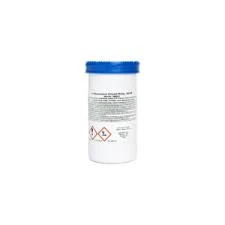flocculant chemicals for water treatment
Flocculant Chemicals for Water Treatment An Overview
Water treatment is a critical process that ensures clean and safe drinking water is available for communities around the world. One of the essential components of this process is the use of flocculant chemicals. These substances play a vital role in the removal of suspended particles from water, making it clear and chemically stable. This article will delve into the types of flocculants used, their mechanisms, and their importance in water treatment.
Flocculants are chemical agents that facilitate the aggregation of suspended particles in water. They work by neutralizing the electric charges on these particles, allowing them to clump together and form larger aggregates, known as flocs. This aggregation process makes it easier to separate the solid particles from the water through sedimentation or filtration.
There are primarily two categories of flocculants organic and inorganic. Organic flocculants are mainly synthetic polymers, such as polyacrylamides, which are widely used due to their high efficiency and effectiveness at low concentrations. Inorganic flocculants, on the other hand, include compounds like alum (aluminum sulfate) and ferric chloride. Each type has its advantages and specific applications based on the water quality and treatment needs.
Alum has been one of the most traditional flocculants used for decades. It reacts with dissolved material to form a gelatinous precipitate, which encapsulates impurities, thereby enhancing their removal during the sedimentation process. While effective, the use of alum can lead to increased turbidity and challenges in managing residuals, which necessitates efficient handling and disposal strategies.
flocculant chemicals for water treatment

Polymeric flocculants have gained popularity because of their versatility and effectiveness even at lower doses. They can be tailored for different water qualities, making them ideal for a wide range of applications from municipal drinking water treatment to industrial wastewater treatment. Furthermore, the use of polyacrylamides and other synthetic agents often results in reduced sludge volume, which is a significant operational advantage.
The choice of flocculant is dictated by several factors, including water source, particle size, and desired treatment outcomes. Water with high turbidity levels may require specific flocculants that can rapidly aggregate particles. Conversely, softer water sources with lower turbidity might benefit from different formulations to optimize efficiency without unnecessary chemical dosing.
Another critical aspect of flocculant use is the consideration of environmental impact. While many flocculants effectively improve water quality, the residual compounds must be managed to prevent ecological harm. There is an increasing push towards biodegradable or less toxic flocculants that minimize the environmental footprint of water treatment processes.
Additionally, the effectiveness of flocculants can be influenced by pH, temperature, and the presence of other substances in the water. Therefore, conducting jar tests is a common practice in water treatment facilities to determine the optimal type and dosage of flocculant for specific water sources.
In conclusion, flocculant chemicals are indispensable in the field of water treatment, facilitating the removal of impurities and ensuring the provision of safe drinking water. The ongoing research into new formulations and environmentally friendly alternatives underscores the importance of innovation in this sector. As global water challenges grow, the role of effective flocculants will be vital in maintaining the quality and sustainability of our water resources.
-
Water Treatment with Flocculant Water TreatmentNewsJun.12,2025
-
Polymaleic AnhydrideNewsJun.12,2025
-
Polyaspartic AcidNewsJun.12,2025
-
Enhance Industrial Processes with IsothiazolinonesNewsJun.12,2025
-
Enhance Industrial Processes with PBTCA SolutionsNewsJun.12,2025
-
Dodecyldimethylbenzylammonium Chloride SolutionsNewsJun.12,2025





